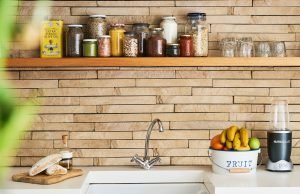Contrary to what many think, Minimalism is not purely about owning as little as possible. It’s open to interpretation. My take on it is that it’s about only owning things that directly add value to your life, and removing as much excess as you can. If you remove so many of your possessions that you continuously need to replace things you have gotten rid of, you are being wasteful and missing the point. Here’s how you can become a minimalist.

Your first step should be assessing where you are now. What is the desired outcome from this change you are going to make? Do you want to live like a monk? Or are you looking to create a certain aesthetic in your home? Are you looking to push your comfort zone seeing how little you can own or are you trying to create as much space in your small apartment/room as possible? Any and all of these reasons are fine. Your personal situation should play a role in what you keep and what you part with.
1) Reflect: Why Become a Minimalist?
Many of those who decide to become more minimalistic have done so because of the frustrations of their current situation. Their consistent behaviours of overconsumption coupled with a scarcity mindset have led them to this point. This desire for change is admirable and shows self-awareness. But this person must also analyse what brought them here in order to make long-term behaviour change possible.
You can remove everything you own, but if your behaviours don’t change then eventually you will return to normal. This change isn’t a one-time action, it’s an ongoing process that never ends. It’s a lifestyle requiring continuous decision-making in order to maintain it.
List the specific behaviours you do, consistently, that have contributed towards your current situation. With this added awareness, it may be enough to reconsider your actions next time your listed behaviour presents itself. Acknowledge that these behaviours once served you, but now they don’t and so it is time to let them go.
2) Start Decluttering
The biggest hurdle you will inevitably face is the dreaded question “What if I need this?”. If you’re asking yourself that question, the answer is you don’t. If you did need it, there would be no question. A good general rule to follow is that if you haven’t used an item in the last year, chances are you are not going to use it in the future. If you’re feeling cautious though, put all the items that fit this criteria into a box. Seal the box. If you haven’t removed an item in 6 months’ time, part with it.

When it comes to sentimental items, this can be tricky. It is not the object itself that has value, it is your memories associated with it. A good way around this is to take a photo, perhaps even write about it and what it means to you. Then store that on your phone, computer, journal or wherever. Bear in mind, if the item (or any item regardless of sentimentality) brings genuine value to your life, keep it by all means! Our goal here is to severely reduce the number of items that are simply being stored and not being used. Mindless elimination is not the goal here.
Sell, Donate or Dispose?
When it comes to the question “Should I sell this? Donate? Or dispose of it?”, you’ll want to consider those options in that order. Selling is ideal, but there comes a point where the monetary value of an object is worth less than the time it would take you to try and sell it. In these instances, donation is the best way forward. If it can’t be donated then try and recycle. Dispose of as a last measure.
You may come across a situation where it makes sense to replace an item with a more “efficient” version. Whether that be a new phone, computer, car, or something else. This is usually a trap. An items worth is not only measured in its monetary value. Maintenance, ongoing associated costs, how much of a headache it causes you in its use, and even the amount of effort it takes you to sell/part ways with it all contribute to its worth.
A new thing which on the surface looks like a sound investment of your time and money can actually turn out to be more of a drain on your resources than you anticipated. Unless the upgrade is of a different magnitude, that 5% faster processor or 4mpg better engine will never pay for itself in the long run. If what you have works well already, why change it?
3) Maintaining the Change
Wealth consists not in having great possessions, but in having few wants.
Epictetus
The become a minimalist is to accept the fact that your life will not get better by simply continuing to add more things to it. Contrary to what advertising tries to convince you, sometimes less truly is more. You will get tempted, as we all do, but do not be persuaded. If you have a consistently warm place to sleep, food to eat, water on tap and friends around you, you already have it better than 99% of all life that has ever lived on earth. Make a habit of practising gratitude for the things you do have. You would likely envy someone in your shoes if you yourself were worse off. Your life could be much, much worse.
It is in our nature to crave more, for improvement and to continuously strive for more prosperous circumstances. This instinct cannot be easily switched off, but you can scratch that itch in a different way. Continuously seeking new experiences and learning new skills will satisfy this urge (even if takes a little longer) and will pay greater dividends to your future than buying new stuff ever will.




